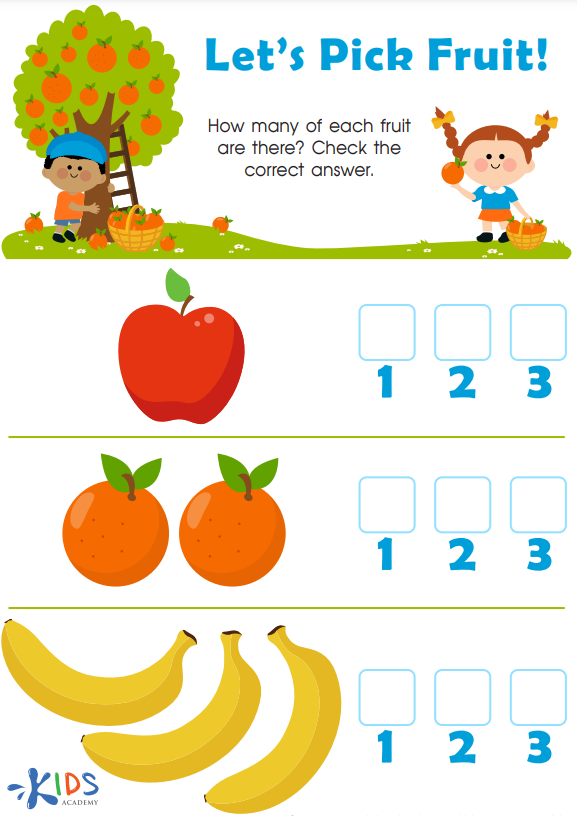-
English
-
English Pre-K
-
Unit 1: Early Literacy Skills
-
ABCs
- Pre-writing Activities
- Letter A
- Letter B
- Letter C
- Letter D
- Letter E
- Letter F
- Letter G
- Letter H
- Letter I
- Letter J
- Letter K
- Letter L
- Letter M
- Letter N
- Letter O
- Letter P
- Letter Q
- Letter R
- Letter S
- Letter T
- Letter U
- Letter V
- Letter W
- Letter X
- Letter Y
- Letter Z
-
Phonological Awareness
- Rhyming Words
- Letter Sounds B, C, D, and F
- Letter Sounds G, H, J, and K
- Letter Sounds L, M, N, and P
- Letter Sounds Q, R, S, and T
- Letter Sounds V, W, X, Y, and Z
- Letter Sounds A, E, and I
- Letter Sounds O and U
- Beginning Sounds
- Matching Letters to Sounds
-
ABCs
-
Unit 2: Vocabulary
-
Common Words
- Sorting Words into Categories
- Color Words
- Verbs and Adjectives
-
Sight Words
- Sight Words 'I' and 'Can'
- Sight Words 'You' and 'Like'
-
Common Words
-
Unit 3: Print Awareness
-
Parts of a Book
- Working with a Book
- Spaces Between Words
- Text and Illustrations
-
Picture Books and Poems
- Picture Book Text Features
- Poem Text Features
- Signs and Labels in the Community
-
Parts of a Book
-
Unit 4: Reading Literature
- Questions About Stories
- Discussing Stories
-
Unit 5: Reading Informational Texts
- Retelling Details in a Text
- Questions About a Text
- Connections Between Events
- Text Features
- Describing Illustrations
-
Unit 1: Early Literacy Skills
-
English Pre-K
-
Math
-
Math for Pre-Kindergarten
-
Logic and Geometry
-
Matching and Sorting
- Same and Different
- Which One Is a Little Different?
- Objects That Go Together
- Sorting by Color and Size
- Sorting The Same Group in Different Ways
- Patterns
-
Shapes
- Shapes in Our Environment
- Naming Shapes Regardless of Size
- Making Shapes in Preschool
- Comparing Shapes
- Relative Positions
- Sorting Shapes
-
Matching and Sorting
-
Early Number Sense
-
Numbers 1–5
- Counting to 3
- Counting to 5
- Arranging Objects up to 3 Objects
- Arranging up to 5 Objects
- Writing Numbers 1–5
-
Numbers 1–5
-
Numbers up to 10
- Counting to 10
- Arranging up to 10 Objects
- Number 0
- Writing Numbers 6–10
- Breaking Down Numbers 6-10
-
Logic and Geometry
-
Math for Pre-Kindergarten
Counting to 3
When working with your young child on foundational math skills, using the colorful and engaging resources form Kids Academy will help learning to take hold. Some preschool aged children may have a hard time grasping the abstract concept of numbers. Making them concrete and visual with fun interactive videos, games, and lessons will help your child to commit skills to memory. To make counting through 3 more accessible and easy to understand, use blocks and treats and observations about the environment to bring Math ideas into your child’s world. Count ants on the sidewalk, eat grapes as you count them, sort candy by color. Most importantly, keep goals small and achievable so that your preschooler will gain confidence at the same time as skills.
This worksheet from the Kids Academy library of resources has colorful buggy friends to sort into categories and count. Students are not only learning to identify numerals and practicing word recognition, they are classifying insects into categories to show their understanding. Simple sentences made of sight words like ‘how’ and ‘can’ will also present kindergarten readiness skills to preschool learners.
This extension activity will also help your child to sort colorful objects—this time loveable zoo animals. A great feature of this resource is that it works like an “I Spy” picture. There are plenty of “I Spy” books at your local library, and videos on YouTube to get them excited about seeking out and finding objects in pictures. Use this sheet as a way to assess how I Spy practice is training their eyes and where or not they can count items accurately without help. After that, check out a video from a local zoo and count how many animals you see.
Working on all this counting practice is best followed up by a healthy snack! Cut up some apples, oranges, and bananas and take as many bites as you count on this printable page. Practice making checkmarks with your child, as they may not have the fine motor skill to shape checkmarks correctly yet. Let them use a thick writing utensil, like a marker.
This video has a friendly chicken who needs help counting her eggs as they hatch! Kids Academy resources provide entertaining videos to make learning visual and fun. Kids love the characters, and the characters love the kids’ willingness to help!
Understanding the concept of one more and one less is fun to explore with young learners. Start small with using pennies or candy. Give them 5 and take one away. How many are left? After doing that until they have none left, touch each one while counting back from 5 to 1. After practicing this idea with real items, use this follow up worksheet to count one more or one less to fill the trains with toys. Then, put the pennies into a piggy bank, or eat a candy snack to celebrate!
Find more articles on teaching number sense to preschoolers in out interactive catalogue!





